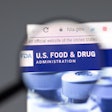As previously discussed (Petfood Industry, July 2013: "FDA to investigate Salmonella in petfood"), the US Food & Drug Administration (FDA) has proposed strict provisions to control Salmonella in petfoods. Briefly, under its policy, detection of Salmonella in a sample of finished petfood, regardless of serotype (i.e., whether pathogenic to the intended species or not), serves to adulterate the petfood and renders it subject to enforcement action. While the pets themselves can also suffer from Salmonellosis, the primary reason for this stringent policy is because of public (i.e., human) health considerations.
Regardless, the noteworthy number of recalls of petfoods over the past few years speaks to the seriousness to which FDA views this matter. As further evidence of FDA’s commitment to the fight against this microorganism and its potential for exposure to people, it also regulates other potential sources of Salmonella in pet products as well as the pets themselves.
A few years back (Petfood Industry, August 2005), I noted that notwithstanding the fact that turtles are not foods, drugs, cosmetics or medical devices (hence not normally subject to the Federal Food, Drug and Cosmetic Act), turtles still fall under FDA authority by virtue of the Public Health Service Act. As such, regulations have been in place since 1975 to ban the sale of all turtles and tortoises (except marine species) with a carapace less than four inches in length.
The prevailing reason for this rule? Again, it’s not for the animals’ direct benefit, but rather to help curtail the incidence of Salmonellosis in humans. It’s not that the smaller-sized turtles are necessarily more prone to harboring or shedding the Salmonella microorganism, but they are the ones more likely to be purchased as pets and handled by small children.
However, turtles are not the only species with which FDA has concern. In conjunction with the Centers for Disease Control (CDC), FDA has a number of educational items (directed to both adults and children) on its website regarding the risk for Salmonellosis stemming from a variety of reptiles and amphibians, including iguanas, snakes and frogs. The documents provide guidance on the safe handling of these animals, appropriate environmental sanitation measures and other commonsense precautions to help prevent infections in people. My favorite piece of advice is not to kiss frogs (you won’t get your Prince Charming, anyway!).
At this time, I am not aware of any plans to amend the regulations to include a ban on species other than small turtles. I am happy about one recent amendment to the regulations, though. Before last year, FDA had authority to demand that viable turtle eggs and live turtles found in commerce in violation of the Act be destroyed. Now, disposition can be handled by alternate means, such as donation of the animals or eggs to a scientific, educational or other suitable organization.
Some carnivorous reptiles and amphibians can be fed mice or rats, either live or frozen whole. FDA now warns the public that these animals may be a source of Salmonella as well. Although by policy the Association of American Feed Control Officials (AAFCO) exempts live animals from state registration and labeling requirements, technically they are still “food” under federal law and could be subject to enforcement action if found to be contaminated with pathogenic microorganisms. In fact, I recall an incident a number of years ago where a state considered action against a feeder rodent producer because of a bacterial safety issue.
Again, FDA offers tips on handling and sanitation to mitigate the risk of Salmonella from feeder rodents. It also suggests that pet rodents and rabbits be handled similarly. With respect to frozen whole prey, it notes that freezing does not kill the Salmonella organism. However, FDA suggests that purchasing frozen feeder rodents that have been irradiated (and whose labeling bears the radura symbol) may help reduce the risk of infection.
Amidst its discussion on reptiles and rodents, FDA also makes mention of live poultry as a potential source of Salmonella in people. In a column I wrote several years ago, I made note of the increasing popularity of keeping chickens as pets (Petfood Industry, November 2010: "Chickens: New opportunity for the pet treat industry?"). Since then, the industry has responded by offering a number of treats and other food items catering to the pet chicken owner as opposed to the commercial farmer. Has FDA noticed this trend as well? If so, we soon may see advice from FDA with respect to the same precautions in handling and sanitation of poultry.
What about chicken feed? As it stands now, FDA policy regarding Salmonella contamination in poultry feed prioritizes enforcement action to situations where the serotype is specifically pathogenic to poultry. The premise for this distinction between livestock feed and petfood is that the farmer understands and assumes the risk of infection and should know how to handle feeds appropriately. However, will the fact that feeds for pet chickens have a greater potential for “direct human contact” affect this policy? We’ll have to wait and see.
www.fda.gov/animalveterinary/resourcesforyou/animalhealthliteracy/ucm344319.htm


















